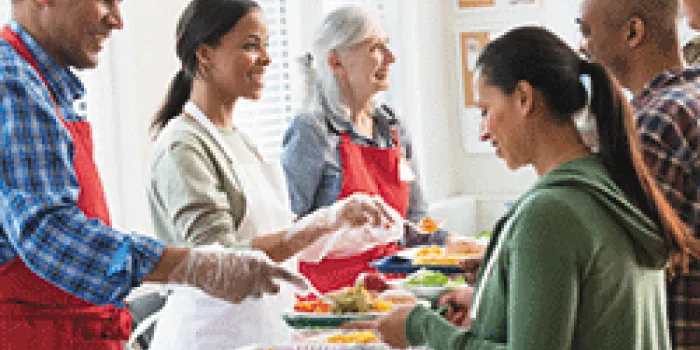Many Americans, including many retirees, spend significant hours volunteering. According to the Corporation for National and Community Service (CNCS), a US federal government agency that helps volunteers improve the lives of others through community service, the age groups with the highest median hours among volunteers are those 65–74 (92 hours per year) and those 75 and older (90 hours per year). Some seniors tutor at-risk children; others drive neighbors to medical appointments. Still others cook meals or use their financial skills to help others. Giving time to worthy organizations helps those in need and rebounds to volunteers who benefit in many ways.
Givers are receivers
Volunteering is often an antidote to loneliness and depression. “Studies have shown that volunteerism provides a sense of belonging and purpose,” says Brendan Hayes, former executive director for the Texas Central Hemophilia Association and current NHF public policy and advocate specialist. “It provides opportunities for social interaction that are essential for their well-being.” When you serve with friends or family members, the experience helps strengthen those relationships. It also provides a way to build personal networks and meet people with similar interests.
Find the right opportunities
If you’re not sure where to begin, consider your hobbies, interests or unfulfilled dreams. If you’re interested in art or history, a museum guide might be a good fit. If you crave foreign travel, check with your place of worship about opportunities to volunteer with groups on international mission projects. If you want to stay local, look for opportunities at hospitals. There are always hands to be held and flowers to be delivered. “Find an organization that you’re passionate about and dive in,” Hayes says.
If you are hoping to make a difference in the bleeding disorders community, consider serving on an NHF chapter board. “Board service is a great way to make a lasting impact on bleeding disorders organizations,” Hayes says. The work and life experience of older individuals often translates well to nonprofit service. According to Hayes, bleeding disorders organizations across the country need business connections, expertise and leadership.
Once you’ve narrowed your interests, an online search can be a good next step. GetInvolved.gov, operated by CNCS, connects adults ages 55 and over with opportunities to volunteer in their communities.
The federal government showed its commitment to getting older Americans involved in community service with The Edward M. Kennedy Serve America Act, passed by Congress in 2009. The act made several changes to expand service opportunities, including lowering the age minimum for Senior Companions and Foster Grandparents from 60 to 55. The act also made AmeriCorps more boomer-friendly by setting a goal that 10% percent of its positions be filled by individuals age 55 and over.
The best volunteering opportunities are those that are interesting, accessible and rewarding. Seek opportunities to make a difference that will genuinely make a difference in your life as well.

